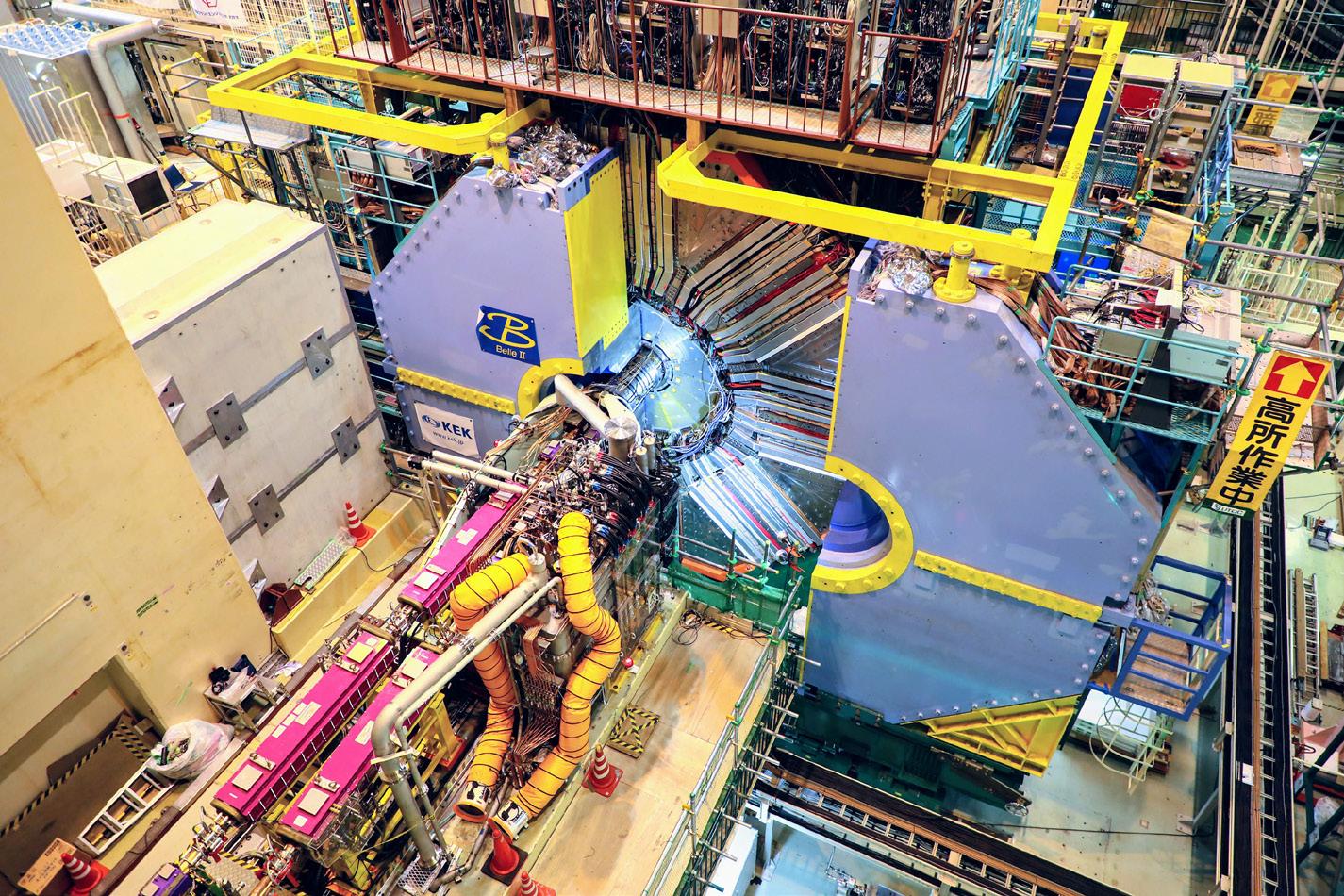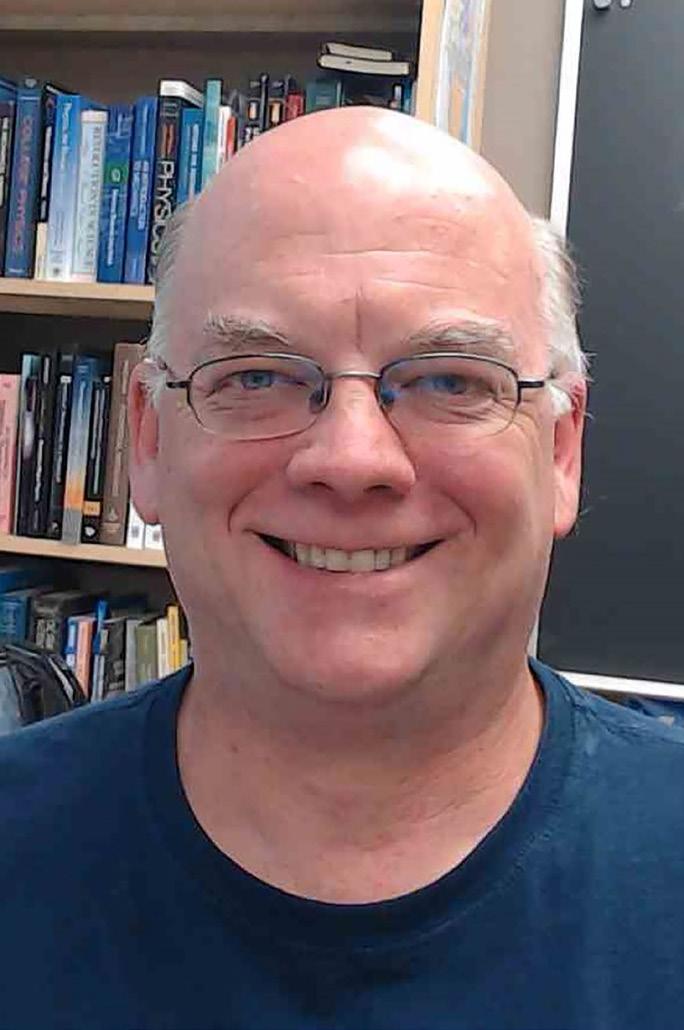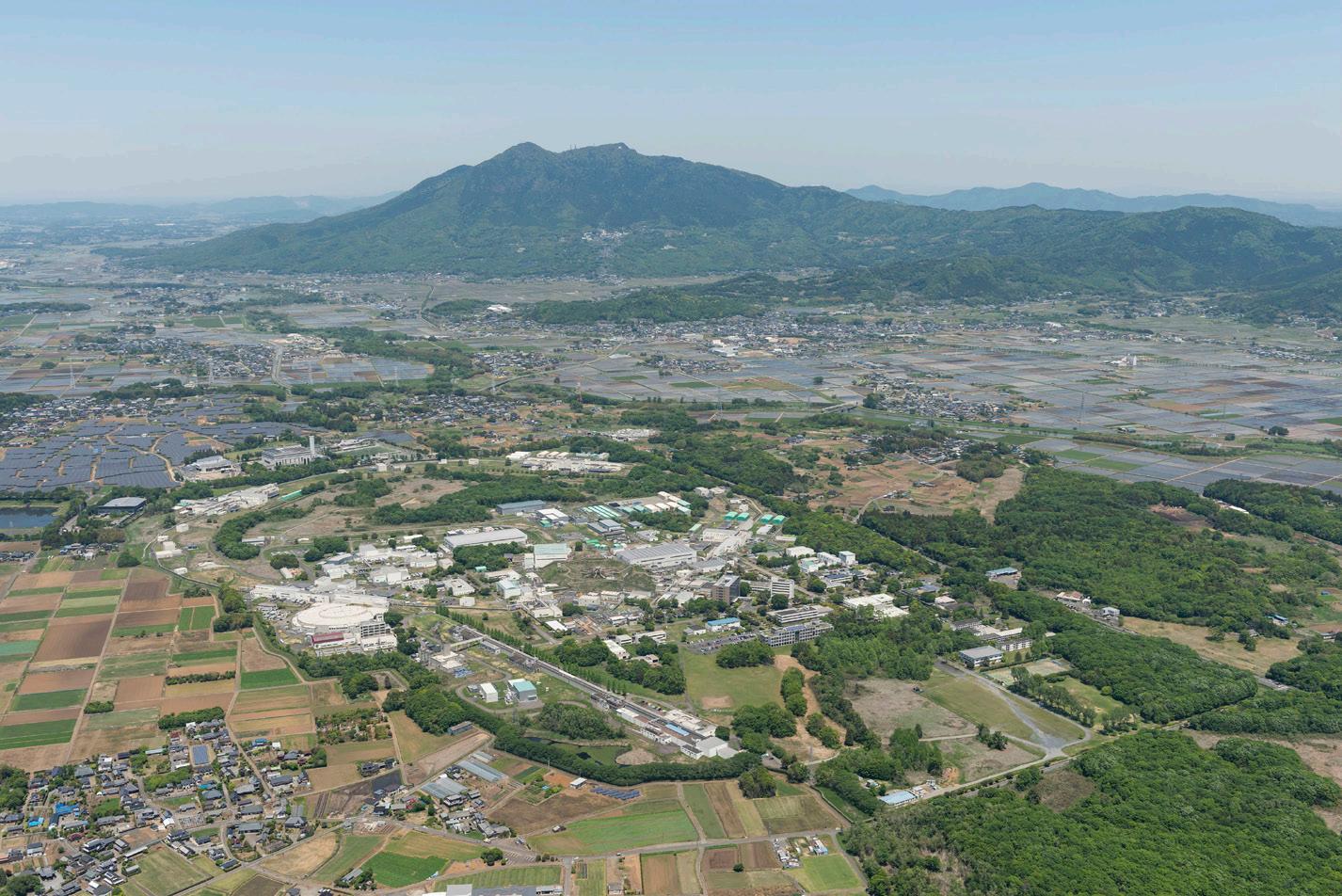
10 minute read
Todd Pedlar
from Agora Fall 2021
Pandemic Particle Physics: A Sabbatical Saga
by TODD PEDLAR, Professor of Physics
The final week of spring semester 2019 was at its end. As the summer of 2019 was around the corner, the thought rang through my mind: “The next time I’ll be in the classroom for a class meeting is now 15 months away!” The blessing of a year-long sabbatical was upon me, through the generous support of the National Science Foundation, which made a year-long sabbatical possible. The anticipation of a full year of completely diving into my research and being able to devote myself fully to the research that students whom I would have over the coming two summers and the intervening academic year was palpable. The research I do with my students and my colleagues near and far is done as part of the Belle and Belle II Collaborations—1000-strong collaborations which have operated experiments at KEK, the national high energy physics laboratory of Japan, since 1999. I have collaborated on Belle and Belle II since 2010, when Belle II was little more than a twinkle in the collective eye of the Belle Collaboration, which had just completed data taking on the original Belle Experiment. Since then, Luther has been an institutional member of these collaborations, one of the 126 participating institutions from 26 countries around the world. The physical processes that we study concern the decays of objects known as baryons and mesons (which are composed of quarks and antiquarks at the fundamental level). Baryons, like the proton, are composed of three quarks, while mesons, the lightest of which is known as the pion (��), consist of a quark-antiquark pair. Most of the systems we study involve one or more heavy quarks (strange, charm, and/or bottom). By measuring the masses and studying the decay processes undergone by these heavy quark systems, we are able to gain insight into the force that binds these systems, the strong nuclear interaction.
In order to study the decays of heavy mesons and baryons most effectively, one must identify all the decay products of a given decay process and measure their energies and momenta. In many cases, a given heavy meson decays by way of a cascade of a few steps until finally what remains are those particles referred to as “final state particles,” which are either stable or long-lived enough to exit the detector before undergoing further decays. The work that we do specifically at Luther involves both studying the various decays of heavy mesons, and, in service of Belle II, developing software for final state particle identification. In the spring of 2019, the Belle II Experiment had begun in earnest, at long last, after many years of preparation, construction, and testing of various component parts of the detector and accelerator systems. As my sabbatical started, in June of 2019, we were beginning to work out the kinks of an essentially brand-new detector system,
The Belle II detector on the Super-KEKB beamline at KEK in Tsukuba, Japan. Copyright KEK Todd Pedlar


Aerial view of KEK, the national high energy physics laboratory of Japan, and neighboring Mount Tsukuba. Copyright KEK
and were working together with our colleagues in the accelerator division of KEK, the national high energy physics laboratory of Japan, to characterize the performance of the upgraded accelerator system, Super-KEKB. Elementary particle physics experiments nearly always come on line quite gradually, and the new incarnation of Belle was no exception to the rule. Every instrument within the massive detector systems we use in our field must be checked, rechecked, calibrated, and recalibrated. New accelerator facilities like Super-KEKB also need extensive testing before the associated experiment(s) are ready for prime time. In the spring of 2018, the Super-KEKB electron and positron beams which collide in the heart of the Belle II detector were first brought into collision, and the first year of low-intensity running of the experiment was entirely devoted to initial tests of the functionality of the accelerator and to some components of our detector system. By June 2019, we were ready to start taking data using the fully-instrumented Belle II detector, and to study its ability to do what we need it to do—i.e. precisely record the energy, momentum, and particle type produced in each annihilation event arising when electrons and positrons collide. One of the tasks for this first full year of detector studies—and one of the tasks performed by the Physics Performance working group that I am part of in the Belle II Collaboration—could now be undertaken. It was indeed an exciting time. As I frequently remind my students, there is no experience for a particle physicist like the startup of a brand-new experiment, watching those first bits of data being collected, knowing that all your preparatory work is being put to the test. It’s positively exhilarating. After a summer of working here at Luther with my students, travelling to KEK for some shifts on the experiment in this early data-taking phase, and making a long trip to KEK in October 2019 for meetings of our collaboration and more shift-taking, the calendar turned over to 2020. I was looking forward to quite a bit of travel that spring to work with colleagues in Europe and at the experiment in Japan. My first trip of 2020 was to be to a week-long workshop on certain aspects of software development for our experiment. As it turns out, that workshop was to be held in early March... in Torino (Turin), in the far northwest of Italy. (Cue spooky music.) My travel then was to take me from there directly to KEK in Japan, for a couple of weeks (cue spooky music a second time) working on the experiment during the early 2020 running of the experiment. As I remarked at the time to my friends and colleagues at Luther as it became evident that things were suddenly to change, I couldn’t have chosen two more ironic locations for my first two planned destinations of the year: the two places (apart from China) where serious Covid outbreaks would occur. I was indeed fortunate that the workshop had not been set for its original date of early February. Who knows what I unwittingly might have brought back to the US (or if I’d have been able to travel back at all!). In short, all that travel—and all travel to date—ground to a halt. No extended stays at KEK, and unfortunately no ability to work side by side in Japan with Zach Stottler ('15), a research student of mine, and a close colleague of mine on Belle II. Zach is a Ph.D. student at Virginia Tech, and he and I are working together on an analysis of a particular class of heavy meson decays using Belle data. We will soon be publishing a paper on the analysis, and it forms the basis for his Ph.D. dissertation, which he expects to defend in the fall or winter of this year. Fortunately, both before and after COVID fundamentally flipped our lives upside down, Zach and I had been collaborating by remote connection for a very long time. Our work wasn’t tremendously interrupted by our inability to be in the same physical location, but we lament the opportunity for close collaboration during long stretches at KEK.
In addition to my work with Zach on our analysis of Belle data during my sabbatical, I also had the help of Luther research students Linnea Lee-Brown ('21), Aiden Berdahl ('21), Nicholas Behrens ('21), and Alain Nishimwe ('22) on studies of the Belle II detector performance using the brand new data taken in 2019-2020. COVID made 2020 interesting, though the students and I were able to do research all summer, albeit remotely. Despite the challenges, we were able to make some significant contributions to the work of the collaboration in its particle identification efforts.
One of the techniques that we developed over the course of my sabbatical was the use of a fairly prolifically pro-
duced baryon, the ��, which is a heavy cousin of the neutron, in which one of the neutron’s down quarks is replaced by a strange quark. Most of the time, �� decays to a proton and a pion, and the decay signature for the process we found to enable identification of which of the two particles produced when the �� decays is the proton, and which is the pion, without recourse to any of our particle detection capabilities. We purely study the decay kinematics, that is, how the momentum of each particle produced in the decay is related to each other. The bottom line in terms of Belle II particle identification is that the technique we developed using �� decays enables us to independently study, calibrate, and evaluate the performance of the Belle II detector. Because we know from kinematics of these decays which of the decay products is the proton, we are able to directly test how the detector responds to a proton passing through it. We can use the decays of �� that we reconstruct to tell us how efficiently our particle-identification algorithms are able detect protons, and how often we mistakenly identify actual protons in the data as some other kind of particle— what we denote “fake rate.” We are able to use direct measurements using the data itself rather than on estimates that rely on a combination of the data and simulations. This and other data-driven methods help us to understand our detector performance more precisely, but also to revise and improve our detector simulation software so that it better reflects the actual response of our new detector.
One of the wonderful lessons for my research students that arises from this work concerns the iterative process that characterizes all scientific endeavors. My students have been able to undertake the journey, which began with simulation, and proceeded to detector design, construction, development of techniques for analyzing data, and seeking creative solutions to interpret the data. Those solutions, together with comparisons of data and simulations, and our new interpretive grid, help inform the next generation of simulations. These in turn can again be checked and compared to our data, giving rise to new and revised models and understanding of the detector performance yet again. The opportunity for students to take part in this iterative scientific process is hard to reproduce in any way other than just doing it, as they’ve been able to. So here, now, in the fall of 2021, my colleagues and I will be opening a new running period soon after our annual summer shutdown. Our accelerator colleagues continue to work on increasing the amount of data that we can take in a given period of time by making gradual improvements of a related quantity known as luminosity, which indicates the number of interactions produced per second. At this early date in the life of the Belle II experiment, we are already accumulating data at a faster rate than any previous experiment, and we look forward to increasing that rate further by a factor of 40 or so in the next few years. This improvement is accomplished by squeezing the beams down to smaller and smaller sizes, as luminosity is inversely proportional to the size of the region in which the beams intersect. The more densely packed the two beams are, the more interactions per unit time can be produced, so it behooves us to squeeze down the beams to occupy as small a region as possible at the interaction point. It is here where, ironically, the SARSCoV-2 virus provides a helpful point of reference. The SARS-CoV-2 virus ranges roughly from 50-nm to 140-nm in size. By the time the accelerator complex realizes its potential and is producing a luminosity a factor of 40 times than the current world-record performance, the SuperKEKB electron and positron beams will need to be, literally, virus-sized in the vertical dimension. As an experimenter who works on the detector and software side of things, what our accelerator colleagues are able to do is simply incredible, and adds to my already deep respect for my Super-KEKB colleagues. The idea of electron and positron beams, in which bunches of electrons and positrons, each moving at nearly the speed of light, are being brought together in an interaction region no thicker than a virus, boggles the mind. Post tenebras lux* the Genevan Reformers said concerning the Reformation—a phrase having nothing to do, of course, with either the darkness of the COVID pandemic, or the luminosity (or light!) that fuels the Belle II experiment. Regardless of the potential clumsiness of borrowing such a theological phrase to characterize my hopes for the future of my research group’s work, I’ll stand by it. With hope for the future as we emerge from this pandemic stronger together, Soli Deo Gloria.
*After darkness, light.










